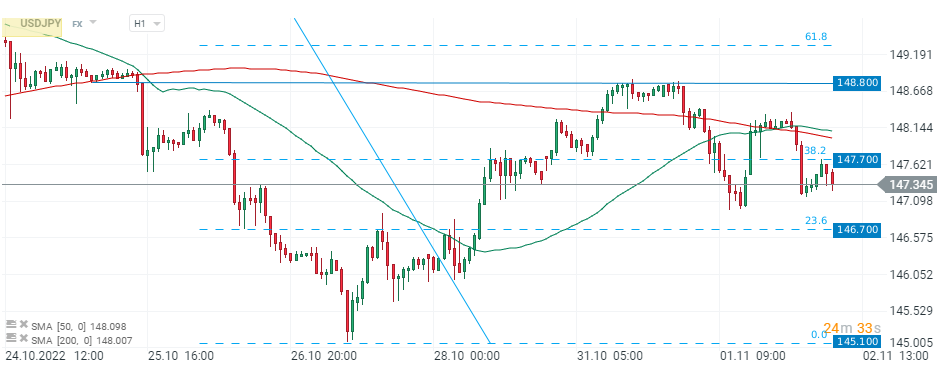- Three major US indices finished yesterday’s session lower, while investors look ahead to today’s Fed meeting. S&P 500 fell 0.41%, Dow Jones dropped 0.24% and Nasdaq lost 0.89%.
- Mixed moods prevailed during the Asian session. Nikkei fell 0.05%, S&P/ASX 200 rose 0.14% lower while Kospi jumped 0.17%. Chinese indices traded over 1.0% higher.
- DAX futures point to a higher opening of the European cash session today
- BOJ’s Kuroda does not see the need to change current easing policy, while weakening yen is neagtive for the Japan economy
- Japan finance minister Suzuki: We will not say when we will intervene but ready to do so
- BOJ minutes, showed that policymakers are concerned weak yen could hurt households, small firms, services
- NIO suspended production at two factories due to COVID restrictions
- PBoC Governor Yi said that inflation in China remains subdued and expects reasonable range of economic growth
- BOC Macklem says expects to hike rates even further, it will be difficult to move inflation to 2.0% level,
- North Korea fired an estimated 10 ballistic missiles, one of which landed less than 60 kilometers off South Korea’s coast.
- Australian manufacturing PMI fell to 49.6 in October from 50.2 in the previous month
- New Zealand Q3 unemployment rate 3.3% (vs. 3.2% expected)
- South Korean core CPI inflation in October jumped to 4.2% from previous 4.1%
- API report showed a large inventory draw of -6.54 mn barrels, while markets expected small build
- Energy commodities trade higher, with WTI rising around 1.4% and trading near $90 per barrel
- Precious metals trade mostly higher. Gold rose 0.25%, silver trades 0.4% higher and platinum jumped 0.50%. Palladium gains 1.0%
- Cryptocurrencies are trading slightly higher. Bitcoin tested $20,500 level and Ethereum hovers around $1580
- JPY and NZD are the best performing major currencies while USD and EUR lag the most

USDJPY pair pulled back below 148.00 level following fresh comments from Japanese officials. Still, may yen remains under pressure due to a widening policy divergence, as the BoJ maintained its policy of ultra-low interest rates while the FED is expected to raise rates further to fight persistent inflationary pressures.







 +35726030417
+35726030417 support@Forextk.com
support@Forextk.com Android app
Android app

Leave a Reply
Want to join the discussion?Feel free to contribute!